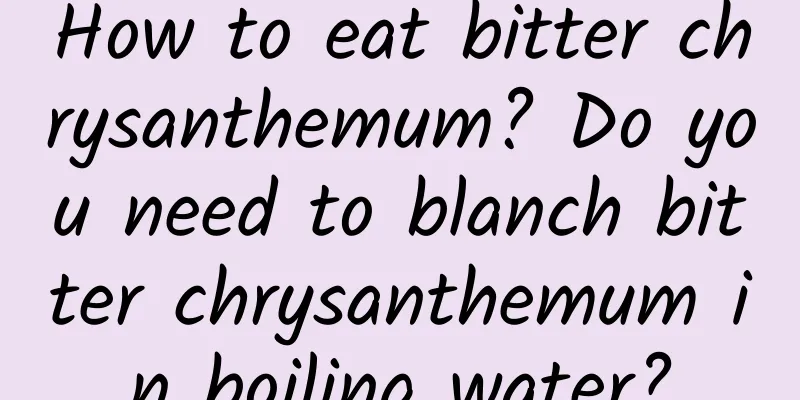What are the animals and plants in Xishuangbanna? What is the climate type in Xishuangbanna?

|
Xishuangbanna has a tropical rainforest climate, with no extreme heat in summer and no severe cold in winter, and warm and pleasant weather all year round. This environment also makes the animals and plants here very comfortable and enjoyable, including more than 5,000 tropical plants, more than 10,000 edible plants, more than 50 wild fruits, and more than 40 fast-growing precious timber trees. Let's take a closer look at what animals and plants there are. Contents of this article 1. What are the animals and plants in Xishuangbanna? 2. What is the climate type of Xishuangbanna? 3. The legend of Xishuangbanna 1What are the animals and plants in Xishuangbanna?Plants in Xishuangbanna: There are more than 20,000 species, including more than 5,000 tropical plants, more than 10,000 edible plants, more than 50 wild fruits, and more than 40 fast-growing precious timber trees. Many plants are precious medicinal materials or have special uses, such as anti-cancer drugs such as Medinia and Gloriosa, the Rhododendron for treating hypertension, and the betel nut for strengthening the stomach and expelling parasites. There are ancient tea trees from more than 1,700 years ago, natural "kettles" and "umbrellas", dancing grass that dances to the sound of music, miracle fruit that changes the taste buds after eating, and curare tree that kills blood. Animals in Xishuangbanna: There are 429 known bird species and 67 mammal species. The number of bird and animal species in Xishuangbanna is unmatched in other places in China. Among them, the Asian elephant, vulture, Indochinese tiger, leopard, etc. are listed as world-protected animals. There are 13 species of national first-class protected animals such as bison, antelope, slow loris, etc., and there are many second- and third-class protected animals. 2What is the climate type in Xishuangbanna?Xishuangbanna has a tropical rainforest climate, with no extreme heat in summer and no severe cold in winter, and warm and pleasant weather all year round. The annual average temperature in Xishuangbanna is between 18 and 22 degrees Celsius, and the isotherm of an annual average temperature of 20 degrees Celsius is equivalent to the 850-meter contour line. The annual sunshine hours in Xishuangbanna are 1,800 to 2,100 hours, and the seasonal distribution is relatively even. The annual temperature difference is not large, but the daily temperature difference is large. For example, the temperature difference between the coldest month and the hottest month is only 9.9 degrees Celsius, while the daily temperature difference can reach up to 27.3 degrees Celsius, which is very different from most parts of my country. Xishuangbanna has a clear distinction between dry and wet seasons, with annual precipitation ranging from 1,193.7 to 2,491.5 mm. The basin is slightly lower, while the mountainous area is slightly higher. However, the dry season has less precipitation but thick fog and heavy dew, which increases the humidity in the dry season and compensates for the lack of precipitation to a certain extent. 3The Legend of Xishuangbanna1. The story of Lan Sanpiao There was a girl in the Bulang ethnic group. She was so beautiful that she could change three colors in one day. She was named Lan Sanpiao. The chieftains of the various Meng tribes of the Dai ethnic group fought endlessly for this beauty. The wars continued for years, bringing great disasters to the people of all ethnic groups. Lan Sanpiao loved her compatriots and said in great grief: "In order to save the people from suffering, I am willing to leave the world." The villagers had no choice but to build a huge stone house (tomb) for Lan Sanpiao, filled it with food, grass and horses, and let Lan Sanpiao live in it, and then closed the stone house. Lan Sanpiao gained "eternal life" in the stone house. People have missed Lan Sanpiao for a long time. It is said that someone once saw her standing on the rock combing her hair, and sometimes heard the sound of her horse's hooves going back and forth to Mengzhe to go to the market at dawn or late at night. For a long time, people in Zhanglang and other villages have maintained the custom of going to the stone house to pay tribute and throwing straw to feed Lan Sanpiao's horse. 2. Dai version of "Cowherd and the Seven Fairies" The romantic love story of the beautiful peacock princess Namnuna and the brave prince Zhaoshutun. In Banna, the peacock is regarded as a symbol of beauty, peace and wisdom. |
<<: Does no stamp mean it's fake 304? Five rumors about thermos bottles, explained all at once
>>: Why is Qinghai Lake a saltwater lake (caused by salt accumulation after evaporation)
Recommend
Market share of major European smartphone manufacturers in Q1 2021 (with original data table)
...
How to measure chest circumference?
Many young women are often troubled by their brea...
What happens if menstruation is delayed when you are not pregnant?
In women's lives, it is common for menstruati...
Interesting fact: What are the uses of the red house and hot air balloon you see during an eye test?
"Look at the red house in the middle of the ...
Is it normal for women to have delayed menstruation?
Many of our female friends may often experience d...
What are the dangers of women not eating breakfast?
Perhaps many people in life do not pay much atten...
Is it normal to have discharge after menopause?
Women will have menstruation for most of their li...
Pain in women's vagina when urinating
If a woman feels pain when urinating, has frequen...
How long after caesarean section can I have a second child?
In fact, choosing a cesarean section will cause g...
What does polycystic uterus mean?
Polycystic ovary (PCO) is a very common disease a...
Women benefit from rubbing that acupoint for life
Loving beauty is a woman’s nature. Nowadays, life...
6 pictures of female posterior uterus
Anyone with a little common sense knows that the ...
Menstrual cycle of 21 days makes you age faster
Normally, a woman's menstrual cycle is about ...
Pain on both sides of the female back spine
Women's bodies are relatively weaker, which m...
How to make hot pot soup base delicious and nutritious? Can peanut sprouts be used in hot pot?
Many people like to drink delicious hot pot soup ...









